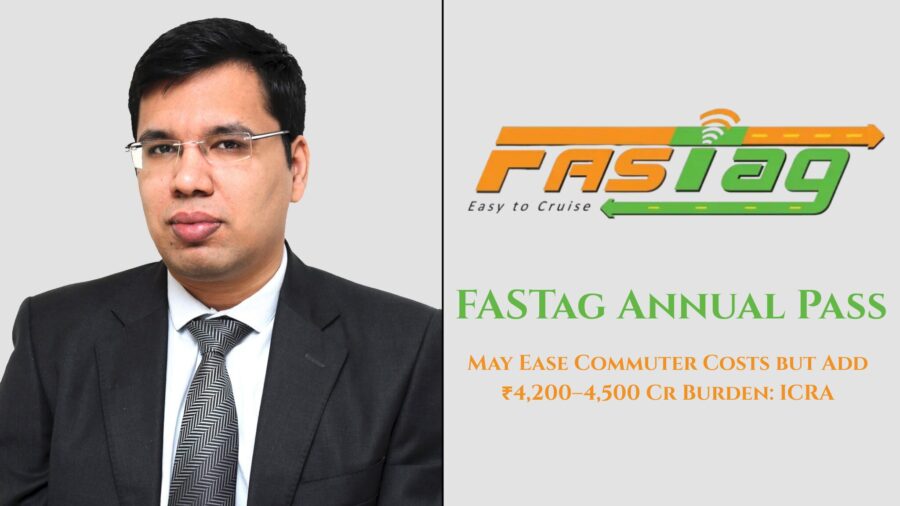Quick 4-Point Overview
- Passenger Car Share – Cars contribute about 35–40% of toll operator revenue, with higher shares on highways around metro cities.
- Impact on Operators – Operators may face cash flow delays, though compensation from authorities is expected.
- Burden on Authorities – If operators are fully compensated, the government could face an additional ₹4,200–4,500 crore annually.
- Who Benefits? – Mainly daily highway commuters; occasional drivers and taxi operators may not see much value.
Introduction
The government’s proposal to introduce a FASTag annual pass has caught everyone’s attention. On the surface, it looks like a win for frequent commuters, making toll payments smoother and potentially cheaper. But what does it mean for toll operators, the authorities, and the larger toll collection system? According to Ashish Modani, Senior Vice President & Group Head at ICRA Ltd., the financial impact could be significant, even if it seems limited at first glance. Let’s break it all down.
Passenger Cars: Small Vehicles, Big Share
Passenger cars might look modest compared to heavy trucks, but as Ashish Modani points out, they form a sizeable chunk of toll revenue — 35–40% overall. On busy national highways near metro cities, this share is even higher. So, while the annual pass mainly targets car owners, its ripple effect on toll finances cannot be ignored.
Impact on Toll Operators
At first glance, toll operators might worry about reduced income. But Modani explains that adequate compensation from the government is expected, since attracting private sector investment into highway projects is a key national goal. The bigger issue may not be lost revenue but delays in payouts — meaning operators might face a temporary receivable build-up, which could affect short-term cash flows.
Burden on Authorities
Here’s where the numbers get heavy. If the government fully compensates toll operators for the annual pass system, it could mean an extra financial burden of ₹4,200–4,500 crore every year on the authority. Modani stresses that while the overall toll collection impact may be just 6–7%, the cost to the exchequer is far from small. This makes the way compensation is handled — the “modus operandi,” as he puts it — absolutely crucial.
Who Really Gains?
The FASTag annual pass sounds attractive, but not everyone benefits equally. For instance:
- Daily highway commuters (like office-goers traveling between cities) may find real value.
- Commercial taxi operators or occasional drivers may not save much, as their travel patterns don’t justify a yearly pass.
So while the proposal looks commuter-friendly, its usefulness depends heavily on driving habits.
Summary Table
| Aspect | Key Detail | Why It Matters |
|---|---|---|
| Revenue Share | Cars = 35–40% of toll income | Shows why annual pass has wider impact |
| Operators | Likely compensated but may face receivable delays | Short-term cash flow challenge |
| Authorities | Extra ₹4,200–4,500 crore burden if fully compensated | Significant fiscal load on government |
| Commuters | Frequent drivers gain, occasional users don’t | Benefits are unevenly distributed |
Conclusion
The FASTag annual pass proposal is a thoughtful step toward making highway travel simpler for regular commuters. But as Ashish Modani of ICRA highlights, the real story lies in balancing commuter benefits with financial sustainability. For toll operators, the main concern is cash flow timing; for authorities, it’s about absorbing the ₹4,200–4,500 crore annual burden. Ultimately, while the scheme could make life easier for some, its success depends on how effectively the government designs compensation mechanisms and ensures fairness for all stakeholders.

